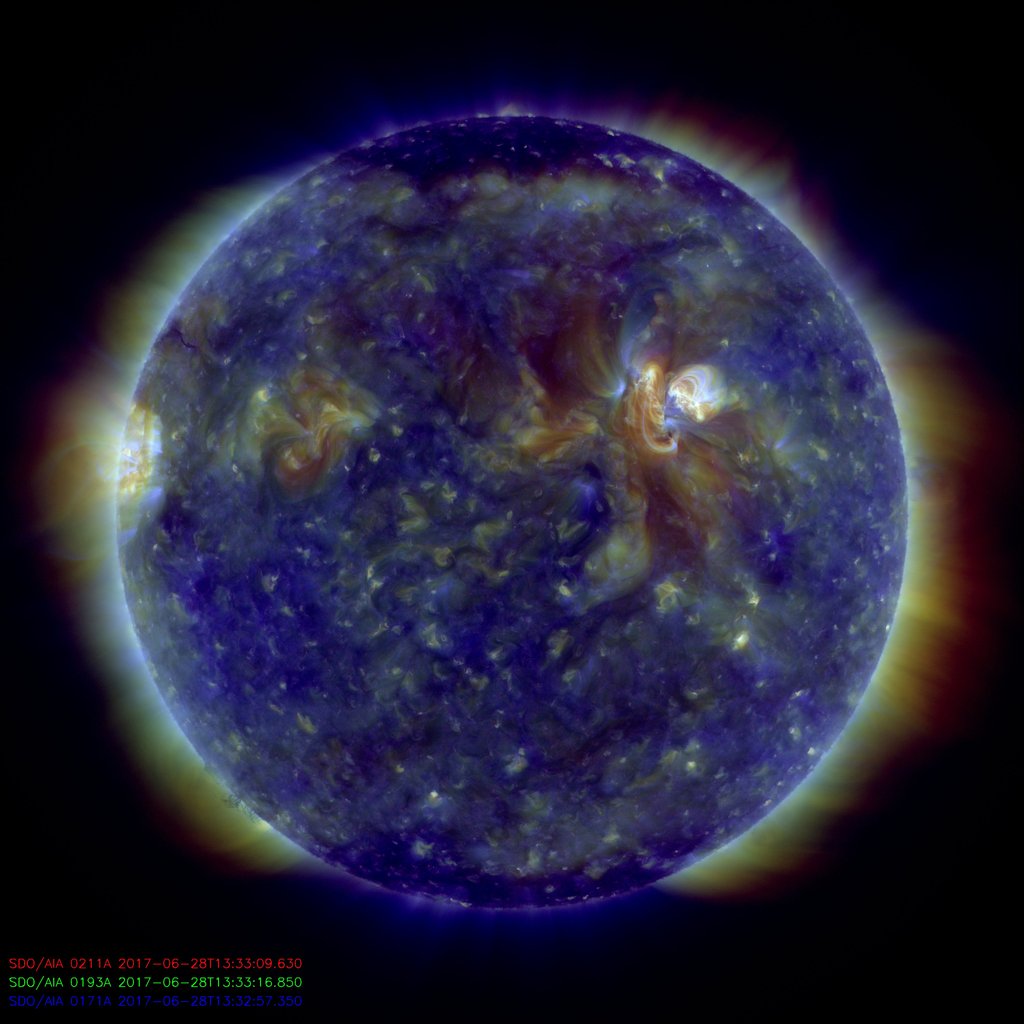12 December 2010
A myriad of colors from the Sun
Posted by mohi
If you passed through Moscone South around lunchtime Sunday after registering for Fall Meeting and heard the dulcet strains of They Might Be Giants: “The Sun is a mass of incandescent gas/A gigantic nuclear furnace/Where hydrogen is built into helium/At a temperature of millions of degrees…” you weren’t flashing back to the 1990s. You were actually hearing snippets of a public lecture that marked the kick-off of AGU’s science sessions.
The lecture, entitled “The Many Colors of the Sun” and presented by NASA Scientist W. Dean Pesnell, was the keynote of AGU’s Exploration Station, a family science event. Pesnell focused on the NASA’s newly launched Solar Dynamics Observatory (SDO), a five year study to understand how the Sun influences Earth through highly detailed images taken at fractions of a second.
These images capture the Sun at various wavelengths of light, which can be though of as different colors, Pesnell explained. Addressing the kids in the audience, he challenged them to think about the different meanings of colors in our language–red for excitement and danger, blue for cool and quiet, orange for friendly and inviting–and how we assign meaning to that color that isn’t part of its physical definition. In the same way, scientists assign wavelengths of light that we can’t see–such as gamma rays, x-rays, ultraviolet light, infrared light, microwaves and radio waves–to specific colors that we can see. This allows scientists to understand aspects of the Sun, such as magnetic field directions, using the wavelengths invisible to our eyes.
“This is why we built SDO–to measure the magnetic field of the Sun,” Pesnell said. He showed the audience several movies taken by SDO, including one of a solar flare erupting just under a week ago. “We’ve never been able to measure the Sun with this kind of resolution, to zoom in and see filaments of a flare and zoom out to see the entire Sun at the same level of detail.”
Pesnell concluded with the idea that through watching these real and assigned colors through images taken by SDO, you see that the Sun changes constantly, that it is different every time you look at it. But don’t look at the Sun with your naked eyes, he cautioned–just go online or download the SDO Android app!
— Mohi Kumar, AGU science writer



 GeoSpace is a blog on Earth and space science, managed by AGU’s Public Information staff. The blog features posts by AGU writers and guest contributors on all sorts of relevant science topics, but with a focus on new research and geo and space sciences-related stories that are currently in the news.
GeoSpace is a blog on Earth and space science, managed by AGU’s Public Information staff. The blog features posts by AGU writers and guest contributors on all sorts of relevant science topics, but with a focus on new research and geo and space sciences-related stories that are currently in the news.
[…] This post was mentioned on Twitter by J.C.Chang, Danielle Venton. Danielle Venton said: RT @theAGU: First #AGU10 blog post! Exploring the colors of the Sun with SDO. http://bit.ly/e8ghpu […]